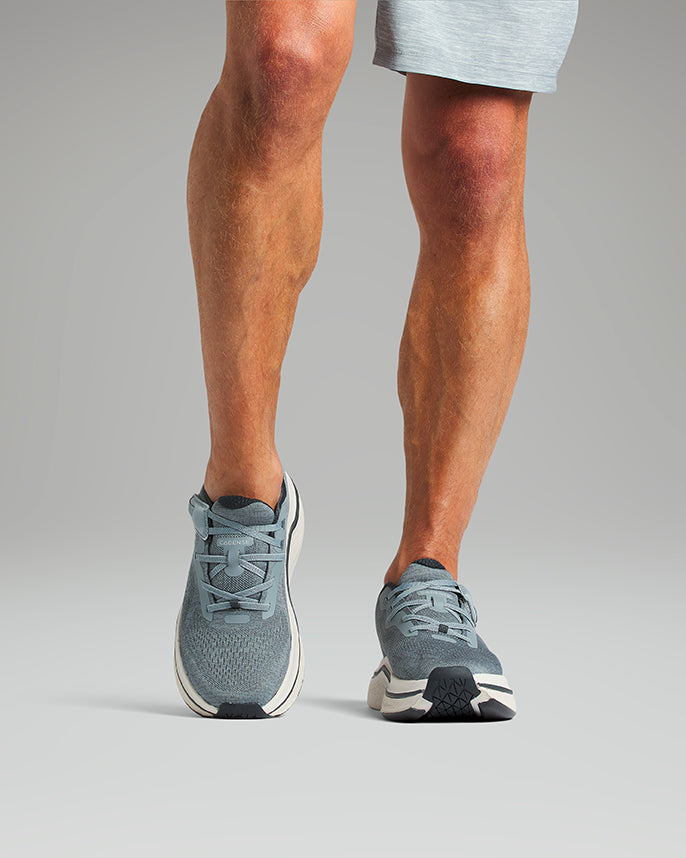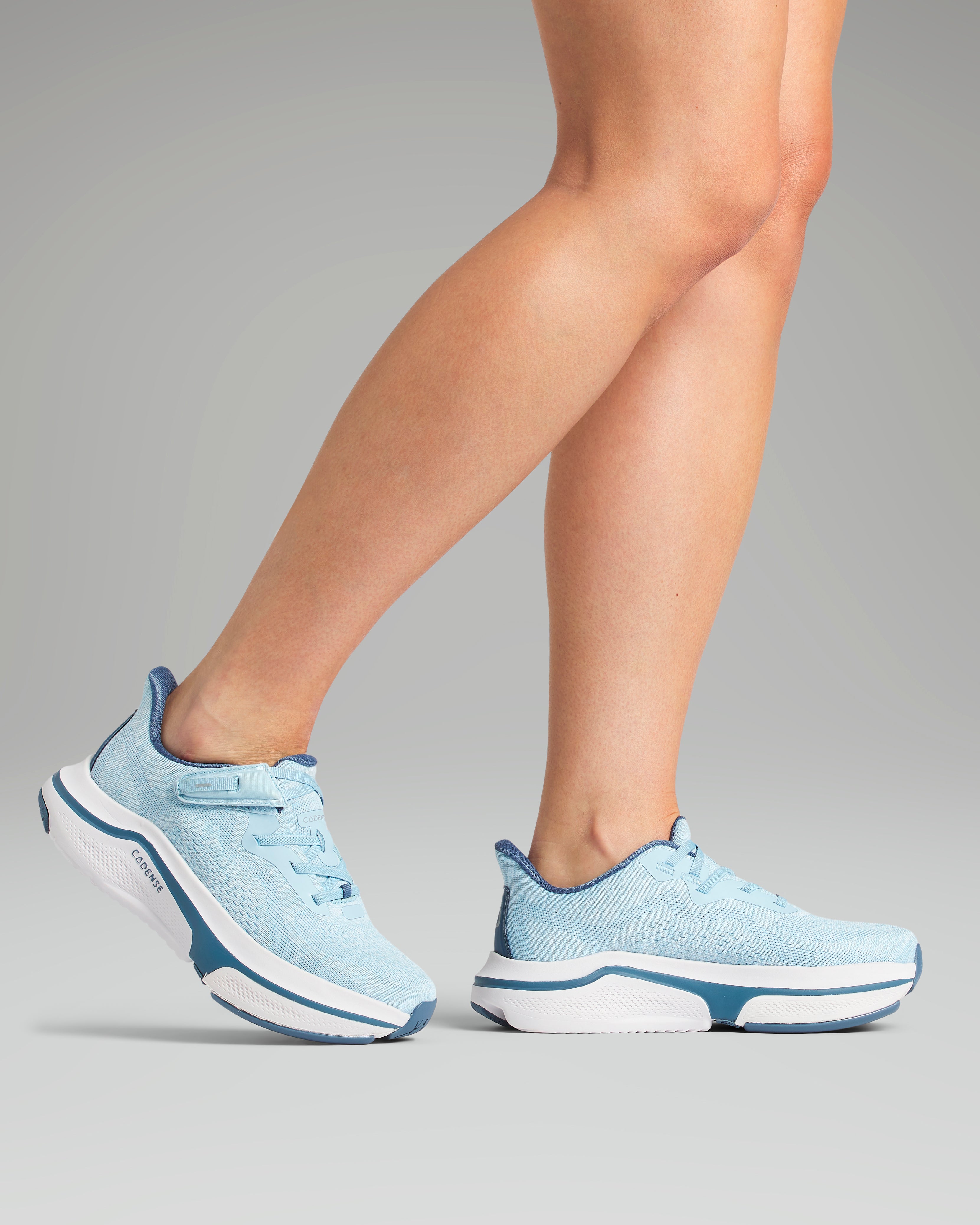
What Causes Swollen Feet in Older Adults

Have you noticed unusual swelling in your feet lately — or in the feet of an older loved one?
Swollen ankles and feet in older adults, also known as peripheral edema, are very common, affecting around one in five people over 60 in the UK.
While swelling can often be harmless, persistent or painful swelling may be a sign of an underlying health issue that needs attention.
In this guide, we'll look at the most common causes of swollen feet in older people, when to seek medical advice, and how small daily changes — including wearing the right adaptive trainers — can make a big difference to comfort and mobility.
What Causes Swollen Feet in Older Adults
Swelling in the feet or ankles can have medical or environmental causes. Understanding the root cause helps you take the right steps to ease the discomfort.
Common Medical Conditions That Cause Swollen Feet
Some of the most frequent medical reasons for swelling in older adults include:
-
Chronic Venous Insufficiency (CVI) – when the vein valves in the legs don’t function properly, making it difficult for blood to return to the heart. Fluid can then pool in the lower legs and feet.
-
Congestive Heart Failure (CHF) – when the heart can’t pump blood effectively, causing fluid build-up in the feet and ankles.
-
Liver Disease – reduced protein production in the liver can cause fluid to leak into surrounding tissues, leading to swelling in the feet, hands, and sometimes the abdomen.
-
Kidney Disease – impaired kidney function can upset fluid balance, resulting in swelling.
-
Lymphoedema – a blockage in the lymphatic system can cause fluid to accumulate in the feet and legs.
If swelling persists, it's important to see your GP. They can help identify the cause and recommend the right treatment.
Environmental Causes of Swollen Feet
Not all swelling is linked to a medical condition. Sometimes it’s caused by everyday factors such as:
-
Prolonged standing or sitting – remaining in one position for too long, whether standing in a queue or sitting through a journey, can reduce circulation and cause mild swelling.
-
Tight-fitting footwear – shoes that restrict movement or blood flow can make swelling worse. Choose wide-fit, supportive trainers instead.
-
High salt intake – too much salt in your diet can cause your body to retain fluid.
-
Dehydration – not drinking enough water can make your body hold on to excess fluid, particularly in the lower legs.
-
Warm weather – hot conditions cause blood vessels to expand, which can lead to summer ankle swelling.

When to Seek Medical Advice
In many cases, mild swelling improves with rest and gentle movement. However, if your symptoms worsen or don't go away, you should contact your GP or practice nurse.
You should also seek urgent medical help if you experience:
-
Sudden or severe swelling in one leg
-
Shortness of breath or chest pain
-
Fever or redness in the affected area
-
Swelling that develops rapidly or becomes painful
Trust your instincts — if something doesn’t feel right, get it checked.
How to Manage Swollen Feet
There are several simple ways to relieve swelling and improve comfort at home.
Lifestyle Modifications
-
Elevate your legs: Prop your feet on a stool or cushion to help fluid drain more effectively.
-
Move regularly: Take short walks or do gentle stretches to improve circulation.
-
Exercise safely: Low-impact activities such as walking, swimming, or chair-based exercise can reduce fluid build-up.
-
Wear supportive footwear: Avoid tight or rigid shoes – instead, opt for lightweight adaptive trainers that accommodate natural swelling throughout the day.
-
Maintain a healthy weight and diet: A balanced diet in rich fruit, vegetables, and lean protein helps reduce water retention.
-
Manage ongoing conditions: Follow your treatment plans for heart, kidney, or liver conditions to help prevent recurring swelling.
Home Remedies and Supportive Tools
A few additional steps can help soothe swollen feet:
-
Compression socks or wraps: Light compression can help reduce swelling, but make sure they fit properly and don't dig into your skin.
-
Gentle massage: A light foot or leg massage can encourage fluid drainage.
-
Topical relief: Cooling gels or creams can ease discomfort.
-
Hydration: Drink plenty of water or herbal tea to flush excess sodium from your system.

How Trainers Can Help with Swollen Feet
Footwear makes a major difference to comfort and swelling.
Tight, narrow, or stiff shoes can restrict blood flow – while adaptive, flexible trainers can support natural movement and circulation.
We recommend the Cadense Original Adaptive Trainer for men and women.
These trainers are:
-
Supportive: Designed for balance and stability.
-
Adaptive: Featuring variable-friction soles that adjust to your movement.
-
Cushioned: Soft midsoles reduce impact and pressure on joints.
-
Easy to wear: Wide openings and flexible materials make them perfect for feet prone to swelling.
They’re engineered for comfort, style, and confidence — helping older adults stay active and independent.
Discover Cadense Adaptive Trainers
Swollen feet are common among older adults, but they don't have to limit your mobility or quality of life. With simple daily adjustments – staying active, keeping hydrated, and wearing well-designed adaptive trainers – you can reduce swelling and move with comfort.
If swelling persists, always check in with your GP to rule out anything serious.




